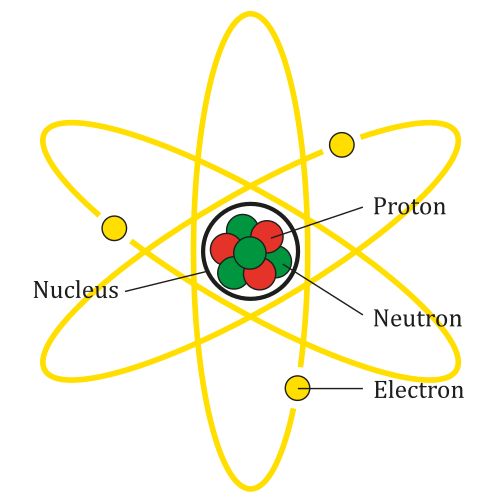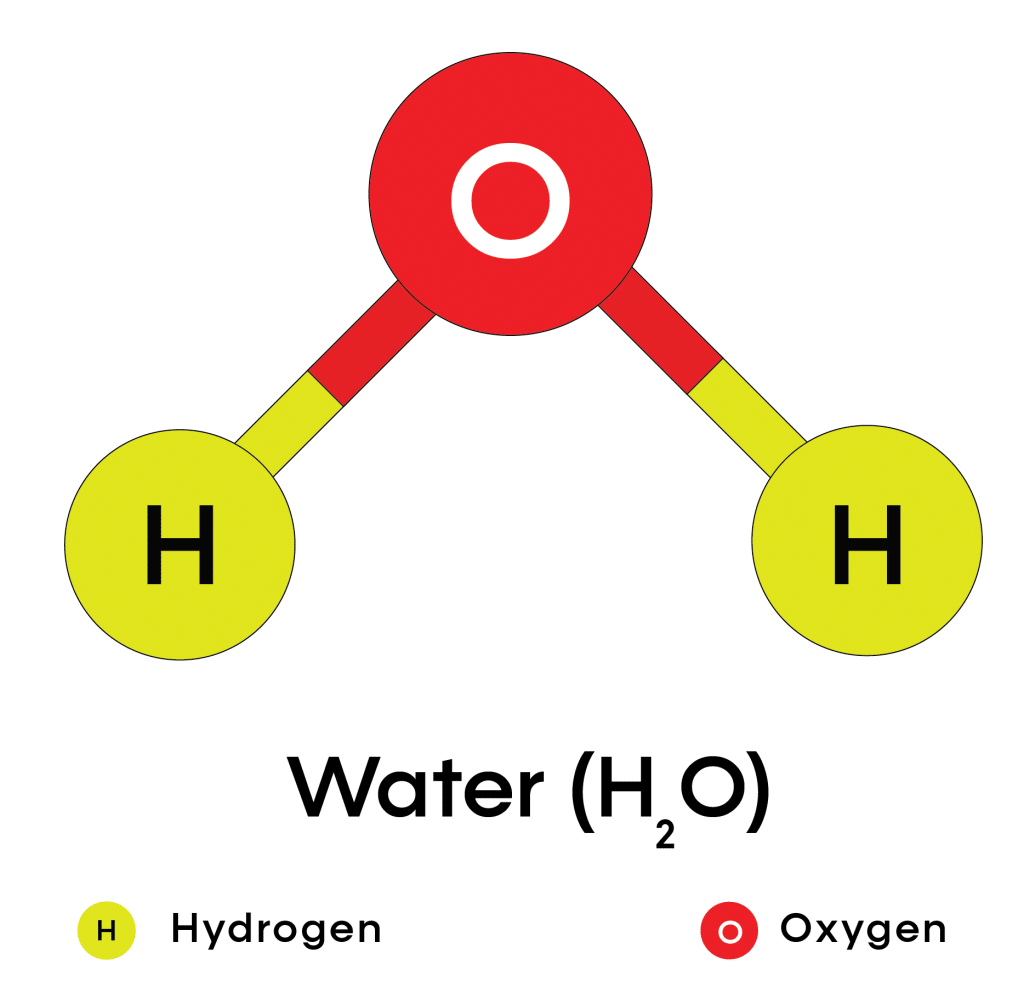Difference between an Atom and a Molecule
Grade 6 Science Worksheets
Atoms and molecules are both fundamental building blocks of matter, but they have distinct characteristics that set them apart. An atom is the smallest unit of an element that can participate in chemical reactions, while a molecule is a group of atoms bonded together.
In this blog, we will explore the key differences between atoms and molecules, and how they interact to form the substances that make up our world. We will also dive into the properties of atoms and molecules, how they bond, and how they behave in chemical reactions. Whether you’re a chemistry student or just curious about the nature of matter, this blog will provide a comprehensive overview of the topic.
Difference between Atom & Molecule - Grade 6 Science Worksheet PDF
This is a free printable / downloadable PDF worksheet with practice problems and answers. You can also work on it online.
|
|
Untimed |
|
Sign up with your email ID to access this free worksheet.
"We really love eTutorWorld!"
"We really love etutorworld!. Anand S and Pooja are excellent math teachers and are quick to respond with requests to tutor on any math topic!" - Kieran Y (via TrustSpot.io)
"My daughter gets distracted easily"
"My daughter gets distracted very easily and Ms. Medini and other teachers were patient with her and redirected her back to the courses.
With the help of Etutorworld, my daughter has been now selected in the Gifted and Talented Program for the school district"
- Nivea Sharma (via TrustSpot.io)
Understanding the difference between atoms and molecules is crucial to understanding the properties of matter and the behavior of chemical reactions.
What is an atom?
An atom is the basic unit of matter that makes up all elements. It is the smallest unit of an element that can participate in chemical reactions. Atoms contain three subatomic particles: protons, neutrons, and electrons.

Protons are positively charged particles found in the atom’s nucleus (center). The number of protons in an atom’s nucleus is called the atomic number, and it determines what element the atom represents. For example, an atom with 6 protons is a carbon atom, while an atom with 8 protons is an oxygen atom.
Neutrons are neutral particles that are also found in the nucleus of the atom. The number of neutrons in an atom’s nucleus can vary, and the total number of protons and neutrons is called atomic mass.
Electrons are negatively charged particles that orbit the nucleus in energy levels called shells. The number of electrons in an atom is always equal to the number of protons. In a neutral atom, the number of protons and electrons is the same, resulting in no overall charge.
The behavior and properties of an atom are determined by the number of electrons it has, and how they are arranged. Atoms can gain or lose electrons, creating ions, and they can also share or transfer electrons with other atoms, forming chemical compounds called molecules.
What is a molecule?
A molecule is a group of atoms bonded together. A molecule can be made up of atoms from the same element (like oxygen, O2) or from different elements (like water, H2O). The atoms in a molecule are held together by chemical bonds, which can be covalent, ionic or metallic.

A covalent bond is formed when atoms share electrons, such as in a water molecule (H2O) where the hydrogen atoms share electrons with the oxygen atom. Covalent bonds are typically formed between non-metal elements.
An ionic bond is formed when one atom loses electrons to another atom, such as in a salt molecule (NaCl) where the sodium atom loses an electron to the chlorine atom. Ionic bonds are typically formed between a metal and a non-metal element.
A metallic bond is formed when atoms share electrons among a sea of electrons, such as in a metal like copper (Cu) or gold (Au).
The number of atoms in a molecule can vary, ranging from a single atom (such as the noble gases) to millions or even billions in some large biological molecules like proteins and DNA. The properties and behavior of a molecule are determined by the type and number of atoms it is composed of, and the nature of the chemical bonds that hold the atoms together.
Molecules play a crucial role in many processes in nature, including chemical reactions, metabolism, and energy storage. They are also the basis of many materials, including plastics, drugs, and fuels. The study of molecules and their interactions is called chemistry, and it is an essential field of science that helps us understand the world around us.
“There have been times when we booked them last minute, but the teachers have been extremely well-prepared and the help desk at etutorworld is very prompt.
Our kid is doing much better with a higher score.”
6th Grade Tutoring
eTutorWorld offers Personalized Online Tutoring for Math, Science, English, and Standardised Tests.
Our Tutoring Packs start at just under $22.49 per hour, and come with a moneyback guarantee.
Schedule a FREE Trial Session, and experience quality tutoring for yourself. (No credit card required.)
Key Differences between an Atom and a Molecule
- Size: Atoms are the smallest unit of an element that can participate in chemical reactions, while a molecule is a group of atoms bonded together. A molecule can be made up of one or more atoms.
- Composition: Atoms are composed of protons, neutrons, and electrons. Molecules are made up of two or more atoms bonded together.
- Physical state: Atoms are typically gaseous and cannot be seen with the naked eye, while molecules can exist in various physical states like solid, liquid, and gas, depending on the type of molecule.
- Behavior: Atoms can gain or lose electrons, creating ions, and they can also share or transfer electrons with other atoms, forming chemical compounds called molecules. Molecules can react with other molecules to form new compounds and release energy, this is a chemical reaction.
- Role in nature: Atoms are the building blocks of all matter, while molecules are the building blocks of compounds and materials. Molecules play a crucial role in many processes in nature, including chemical reactions, metabolism, and energy storage.
Do You Stack Up Against the Best?
If you have 30 minutes, try our free diagnostics test and assess your skills.
FAQS
What is the difference between an atom and a molecule?
An atom is the basic unit of matter, while a molecule is two or more atoms bonded together chemically.
How many types of atoms are there?
There are over 100 different types of atoms, also called elements, that are found in nature.
What is the structure of an atom?
An atom is composed of a nucleus, which contains protons and neutrons, and electrons, which orbit the nucleus.
What is the difference between a covalent bond and an ionic bond?
A covalent bond is a chemical bond formed by the sharing of electrons between atoms, while an ionic bond is a chemical bond formed by the transfer of electrons from one atom to another.
What is an isotope?
An isotope is a variation of an element that has the same number of protons but a different number of neutrons in its nucleus.
How do atoms bond to form molecules?
Atoms bond to form molecules through chemical reactions, where electrons are shared or transferred between atoms.
What is the difference between a compound and a mixture?
A compound is a substance made up of atoms of two or more different elements chemically bonded together, while a mixture is a combination of two or more substances that are physically combined but not chemically bonded.

Kathleen Currence is one of the founders of eTutorWorld. Previously a middle school principal in Kansas City School District, she has an MA in Education from the University of Dayton, Ohio. She is a prolific writer, and likes to explain Science topics in student-friendly language. LinkedIn Profile
Affordable Tutoring Now Starts at Just $22.49
eTutorWorld offers affordable one-on-one live tutoring over the web for Grades K-12. We are also a leading provider of Test Prep help for Standardized Tests (SCAT, CogAT, MAP, SSAT, SAT, ACT, ISEE, and AP).
What makes eTutorWorld stand apart are: flexibility in lesson scheduling, quality of hand-picked tutors, assignment of tutors based on academic counseling and diagnostic tests of each student, and our 100% money-back guarantee.
Whether you have never tried personalized online tutoring before or are looking for better tutors and flexibility at an affordable price point, schedule a FREE TRIAL Session with us today.
*There is no purchase obligation or credit card requirement
Grade 6 Science Worksheets
- Inquiry process
- Nature of Science
- Scientific Inquiry
- Inquiry, Analysis and Problem Solving
- Ethical Practices
- Science and Society
- Biotic and Abiotic Factors
- Impact of Organisms
- Adaptation
- Spheres of Earth
- Natural Resources
- Environmental Issues
- Conservation of Earth
- Understanding Technology
- Abilities To Do Technological Design
- Structure of Earth
- Solar System
- Rocks and Fossils
- Earth Systems
- Plate Tectonics
- Evolution
- Magnetic Field of Earth
- Geologic Time
- Materials and Processes That Shape a Planet
- Astronomy
- Ecology
- Energy
- Kinetic and Potential Energy
- Energy Transfer
- Matter and its Structure
- States of Matter
- Physical and Chemical Changes
- Force and Motion
- Electricity and Magnetism
- Wave Interactions
- Sound
- Light
- Introduction to Life Science
- The Origin & History of Life On Earth
- Plant and Animal Cells
- Parts of a Cell
- The Cell Cycle
- How Living Organisms Get Energy
- Classification of Organisms
- How Plants Grow & Reproduce
- The Human Respiratory System
- The Human Cardiovascular System
- The Human Digestive System
- The Human Endocrine Systems
- The Human Nervous System
- The Human Muscular System
- The Human Skeletal System
IN THE NEWS

Our mission is to provide high quality online tutoring services, using state of the art Internet technology, to school students worldwide.
Online test prep and practice
SCAT
SSAT
ISEE
PSAT
SAT
ACT
AP Exam
Science Tutoring
Physics Tutoring
Chemistry Tutoring
Biology Tutoring
Math Tutoring
Pre-Algebra Tutoring
Algebra Tutoring
Pre Calculus Tutoring
Calculus Tutoring
Geometry Tutoring
Trigonometry Tutoring
Statistics Tutoring
Quick links
Free Worksheets
Fact sheet
Sales Partner Opportunities
Parents
Passive Fundraising
Virtual Fundraising
Our Expert Tutors
Safe and Secure Tutoring
Interactive Online Tutoring
After School Tutoring
Elementary School Tutoring
Middle School Tutoring
High School Tutoring
Home Work Help
Math Tutors New York City
Press
©2022 eTutorWorld Terms of use Privacy Policy Site by Little Red Bird
©2022 eTutorWorld
Terms of use
Privacy Policy
Site by Little Red Bird










